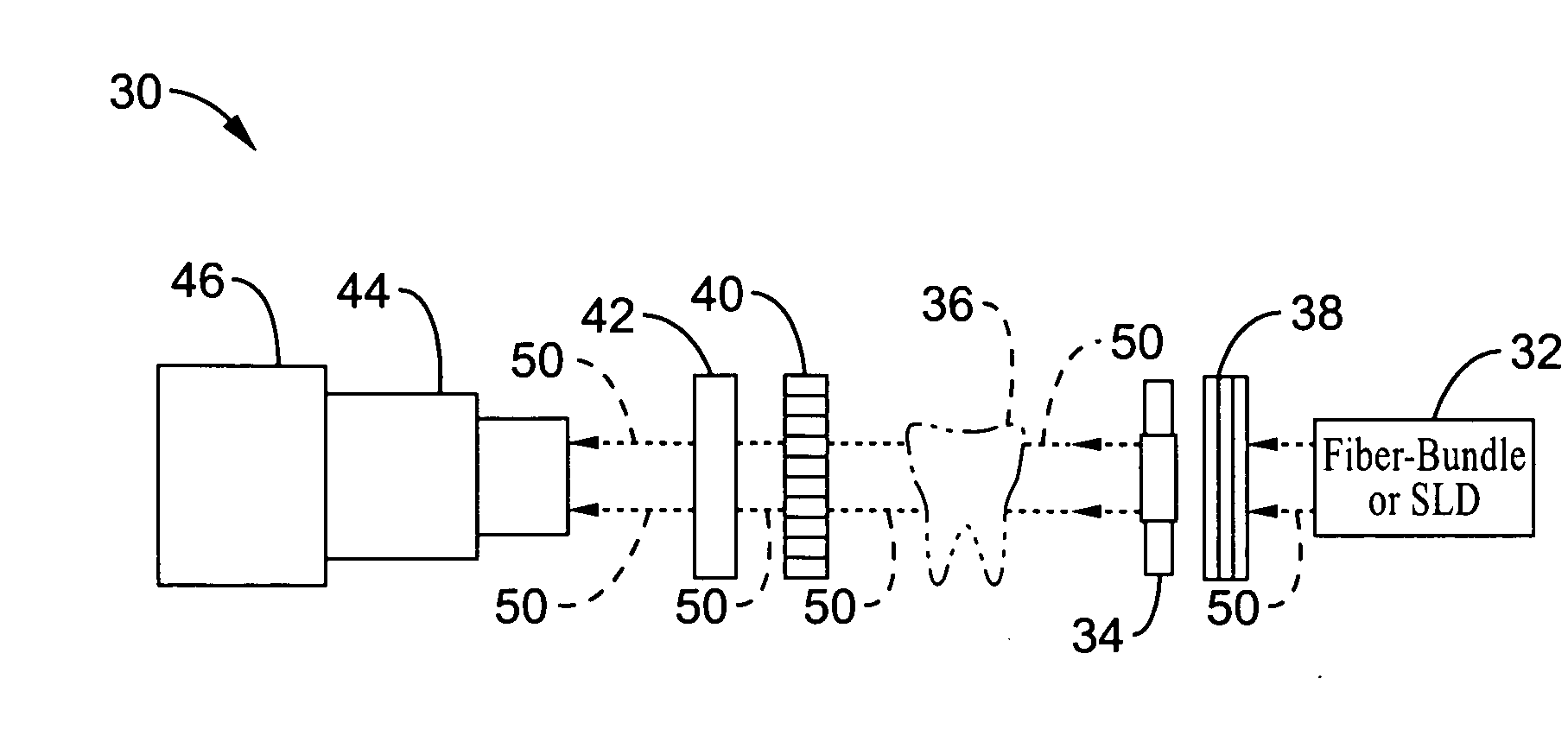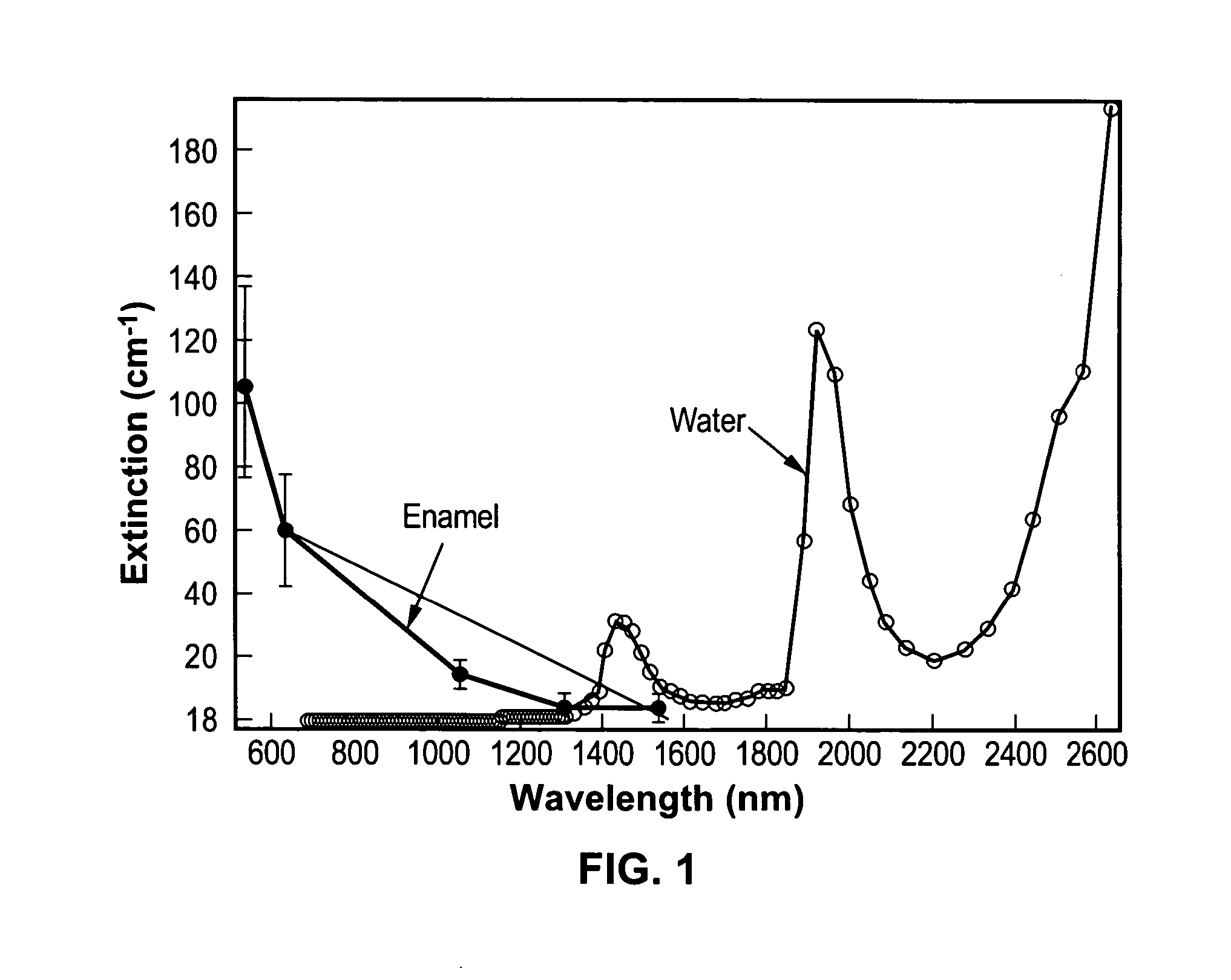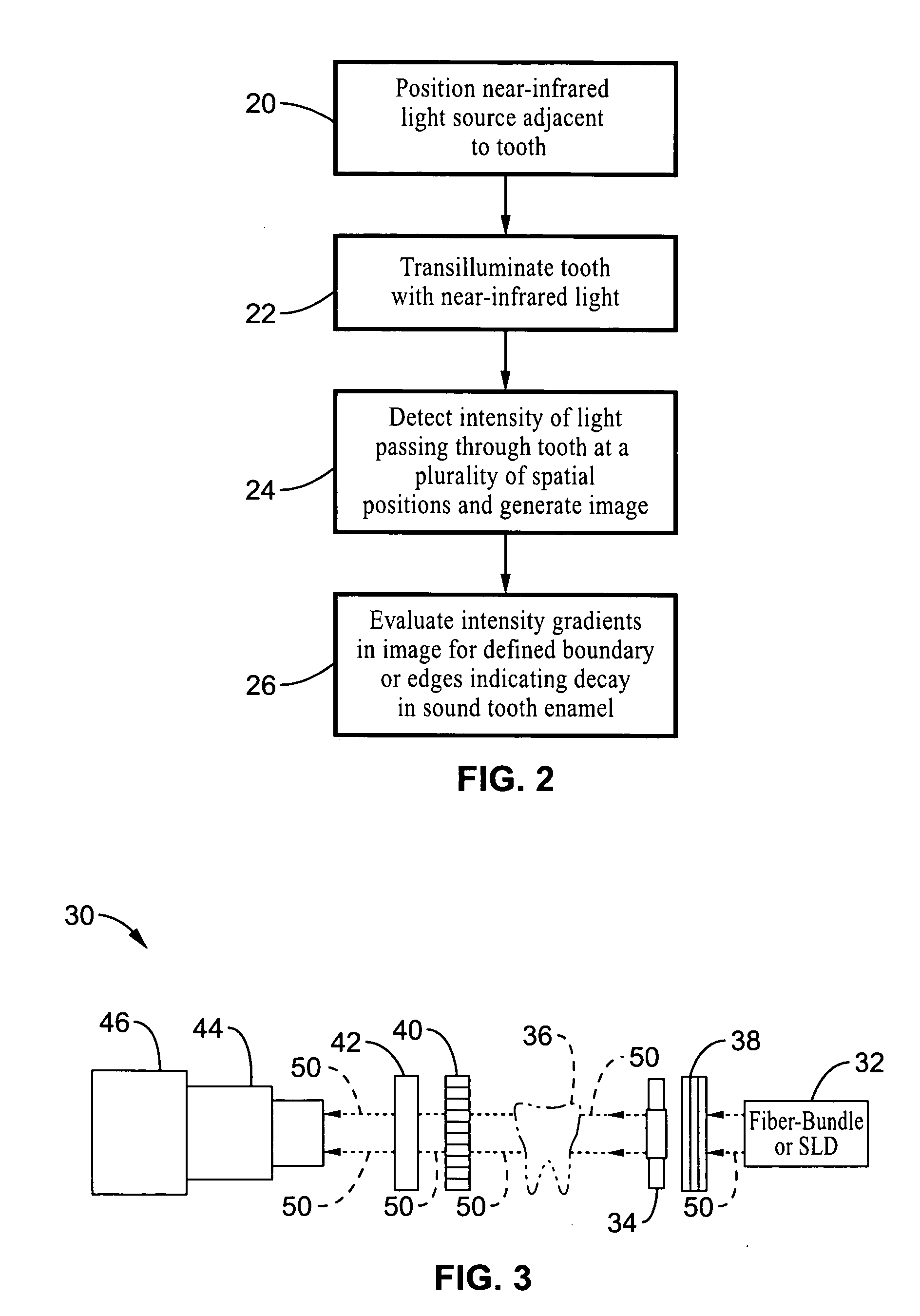Near-infrared transillumination for the imaging of early dental decay
a dental decay and near-infrared technology, applied in the field of dental caries detection by near-infrared transillumination, can solve the problems of occlusal lesions, root caries, secondary decay around composite restorations, cracks and defects in tooth enamel,
- Summary
- Abstract
- Description
- Claims
- Application Information
AI Technical Summary
Benefits of technology
Problems solved by technology
Method used
Image
Examples
example 1
[0071] Thirty plano-parallel sections of enamel of various thicknesses (2-mm, 3-mm, 4-mm, 5-mm, 6-mm, and 6.75-mm) were prepared from non-carious human teeth. These sections were stored in a moist environment to preserve tissue hydration with 0.1% thymol added to prevent bacterial growth. Uniform scattering phantoms simulating dental decay were produced midway through each section by drilling 1-mm diameter×1.2-mm deep cavities in the proximal region of each sample and filling the cavities with hydroxyapatite paste. A thin layer of unfilled composite resin was applied to the outside of the filled cavity to seal the hydroxyapatite within the prepared tooth cavity.
NIR Imaging
[0072] Both a 150-watt halogen lamp, Visar™ (Den-Mat, Santa Maria, Calif.), and a 1310-nm superluminescent diode (SLD) with an output power of 3.5 mW and a bandwidth of 25-30 nm, Model QSDM-1300-5 (Qphotonics Inc., Chesapeake, Va.) were separately used as the illumination source.
[0073] Model K...
PUM
 Login to View More
Login to View More Abstract
Description
Claims
Application Information
 Login to View More
Login to View More - R&D
- Intellectual Property
- Life Sciences
- Materials
- Tech Scout
- Unparalleled Data Quality
- Higher Quality Content
- 60% Fewer Hallucinations
Browse by: Latest US Patents, China's latest patents, Technical Efficacy Thesaurus, Application Domain, Technology Topic, Popular Technical Reports.
© 2025 PatSnap. All rights reserved.Legal|Privacy policy|Modern Slavery Act Transparency Statement|Sitemap|About US| Contact US: help@patsnap.com



